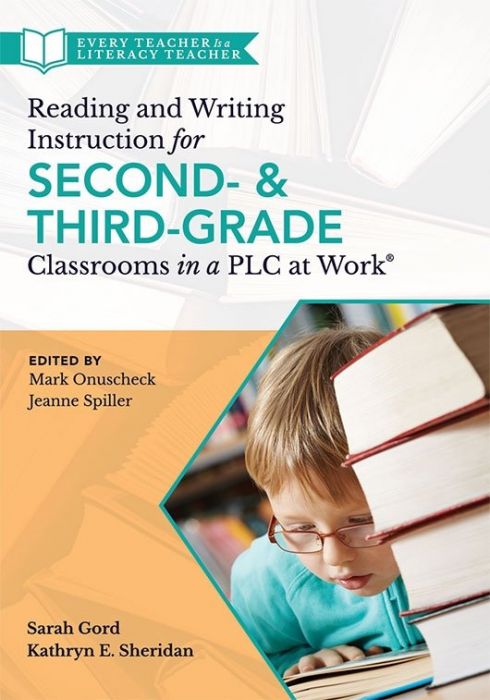
Reading and Writing Instruction for Second- and Third-Grade Classrooms in a PLC at Work®
Discover how to design standards-aligned instruction, assessment, and intervention that support the literacy development of every second- and third-grader. This resource contains best practices for collaborative teams looking to improve their students’ reading comprehension.
Your instructional strategy guide to supporting the literacy development of every second- and third-grader
Fully prepare students to begin the pivotal transition from learning to read to reading to learn. Written for individual teachers and collaborative teams, this resource outlines how to craft instruction to ensure every learner masters literacy expectations in second and third grade. Readers will gain a wealth of strategies and practices for designing standards-aligned instruction, developing quality assessment, providing timely interventions, and more.
- Understand the role professional learning communities (PLCs) play in literacy development.
- Learn how teams of teachers can maximize their collective strengths to make profound impacts on student literacy and reading comprehension.
- Obtain instructional strategies and tools, such as the pre-unit protocol (PREP), for unpacking and clarifying literacy standards.
- Observe how to collaboratively score quality assessments as a team and conduct effective data inquiry and analysis.
- Study the powerful impact literacy has on student engagement and inclusivity in grades two and three.
Related Topics
InstructionLiteracyProfessional Learning Communities at Work®Professional Learning Communities
Additional Information
“Packed with theory and practice ideas, this book is sure to help educators maximize their collaborative team time and improve teaching delivery. Sarah Gord and Kathryn E. Sheridan zoom in on second and third grade to give a comprehensive view of what is possible when teams boost targeted instructional strategies, differentiation, and collaboration.”
“Finally, a grade-band-specific book that thoughtfully aligns literacy instruction to the PLC process, achieving two goals simultaneously. Any district currently revising curriculum would benefit greatly from this book.”
“This wonderfully detailed guide for teachers is guaranteed to be a well-used resource for demystifying reading and writing instruction in second and third grade. Teachers will appreciate the practical strategies for planning, teaching, and assessing students’ progress. Sarah Gord and Kathryn E. Sheridan clearly know their subject well and convey the supporting research in a powerful, teacher-friendly way. Plan to keep this book on your desk for easy reference.”
When can I access my eBook? Your eBook will be accessible through VitalSource once your payment has been processed.*
*When using a check or purchase order, the order submitted online will not be processed until Solution Tree receives the check or a copy of the signed official purchase order. Your purchase order must note payment terms of net 30 days. We cannot process purchase orders that do not note these payment terms. Please submit all payments to [email protected].
How do I access my eBook?
To access your eBook:
- Create a free VitalSource account by visiting VitalSource.com. If you already have a VitalSource account, please log in to your account.
- Paste the redemption code that Solution Tree will email you in the “Redemption Code” field on VitalSource.com/Redeem. (Note: You can also access your redemption code within your Solution Tree account under the “eBook” section.)
- Click “Redeem.”
- Enjoy! Once your code is redeemed, your book will be added to your VitalSource Bookshelf and can be read anytime, anywhere.
What are the technical requirements for accessing the eBook? A VitalSource account is required. To sign up for your free account, please visit VitalSource.com.
What if I have trouble accessing my eBook? Please contact VitalSource by emailing [email protected] or by utilizing their Live Chat feature.
What are the shipping and handling costs? There are no shipping or handling costs associated with eBooks. For paperback and hardcover book purchases, standard shipping costs apply. Please visit the Product Orders page for more information on shipping and handling costs.
Can I purchase multiple copies of the same eBook? Bulk orders are not currently available through the website. Website purchases are limited to one eBook per title, per account. If you want to order multiple copies of an eBook, please contact customer support at [email protected].
What if I need to request a refund on my eBook order? RETURN POLICY: We are unable to accept returns or cancel previously placed eBook orders.





